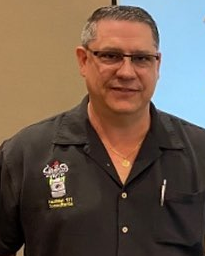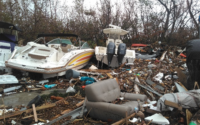The lost art of mentorship, are we failing our own?
Bob Coschignano
Mentorship comes in many different forms and from many different places. Some of these are formal but many are informal. Those bonds that are made during this process are those that will last for an indefinite amount of time. The big problem is, are we still mentoring or failing our own?
Photo Credit: Dave Williams

The following is a story of a mentorship that started with a simple question asked one day in the apparatus bay and has continued for 30 years.
A young firefighter who was assigned to a truck company that also did hazardous materials, was curious as to his future and the path at which he should take. He asked the hazmat officer who was assigned to the same station but on a different unit, what he thought that path should be and was he going in the right direction? This young firefighter really had no desire to do hazmat. It was only by default, because of the apparatus he was on, that he was “the grunt in the suit.” The hazmat Lieutenant explained to the young firefighter that there are many options that he could take for his career, all of which would be up to him. He never gave an answer, only suggestions and allowed the firefighter to make his own decisions and path. After a period of time, this young firefighter was promoted to driver and was now assigned to the hazmat engine where he drove this senior hazmat Lieutenant. He watched his Lieutenant perform his duties in a manner that seemed to be of great ease, to the point where he said, “hey this hazmat stuff doesn’t seem that bad.” As time went on, it was awful funny that the hazmat Lieutenant was always gone when the real hazmat calls were happening. What was not so funny was that the young, now driver was riding up as Lieutenant and was having to make some decisions. He still only had a desire to get back on a truck company as a Lieutenant. While learning more about the hazardous material side of the house, he realized that there were other opportunities that might open up for him in the future. And he was actually starting to enjoy the hazmat side of the house. During this time, several federal classes started to emerge. Anniston, AL. Dugway, Utah New Mexico, Nevada Test site and others that this young driver of the hazmat rig was encouraged to go to and actually learned a great deal.

On September 11th, 2001, the hazmat Lieutenant was off teaching nationally. And after the planes had struck the towers and the Pentagon, the Lieutenant called back to his driver, who was riding up and gave him some extremely specific instructions on what to do and what to tell the chief officers. The driver felt very uneasy giving directives to the chiefs. But knowing where it had come from, they listened intently. A brief period of time after those tragic events, and that of the anthrax incidents later in October, the hazmat Lieutenant told his driver to come to City Hall the next morning as there was to be a big announcement. The big announcement was that this metropolitan fire department was creating its first special operations Chief position and to formulate our plan for special operations and WMD events. This new position was given to the engineer’s Lieutenant. His Lieutenant looked over at him to watch the blood drain from his driver’s face because the driver was on the lieutenant’s list and realized that now he was going to be sitting in the seat that had so much knowledge and prestige. He thought, holy hell, what am I going to do? I don’t know anything. The newly promoted hazmat Lieutenant is now sitting in a seat that he once looked over at. He decided to grab every videotape he could find in the hazmat office and watch as many as he could over a weekend to grab some nugget, some something, some form of information so that when he returned back to shift, he would hopefully make a more educated decision and not get anybody hurt or killed.
The newly promoted special OPS chief came over to talk to the new hazmat Lieutenant. He explained to him some basic information. Number one, if you don’t know, know who to call. We called this the Hazmat Walk. The hazmat walk is essentially walking away from a group of people. Grabbing your cell phone and calling that friend. To help advise or simply to confirm the actions that may be happening. There is no one person that knows everything. Decisions can be made and should be made in a timely manner, but with guidance from others when the answer is not staring you in the face. It is not a form of incompetence but rather, that of professionalism and maturity and an understanding that we don’t know all. Many times, for the first year or two, the new hazmat Lieutenant would call his mentor the Special OPS Chief. Even in the middle of the night, if nothing more to confirm what actions he was taking were correct. And he knew that that phone would always be answered.

The story I just told you was that of myself and my mentor, Toby Bevilacqua. Both of us retired from the City of Orlando Fire department. This friendship has lasted for over 30 years. He gave me guidance as a young firefighter, as his driver, and as a new hazmat Lieutenant. He gave me the building blocks to be successful. He also helped me guide my new path. That has led me to being an instructor for almost 25 years in the hazmat community to include our mentorship program. To which I’ve met some of the greatest people that I will ever know. Many I call friends.
So, what are some of the key components for a mentorship program or simply just an informal mentorship? You can have mentorship informally with your crew or you can establish a mentorship program that helps not only firefighters, but maybe new lieutenants and new chief officers. There are many forms of mentorship. There are many ways of going about it. The path and plan are up to you.

Here is just a short outline of some of the things that we should consider when either being mentored or mentoring someone else.
- Match Mentors and Mentees:
- Consider skills, personality, and compatibility.
- Facilitate introductions.
- Provide Resources:
- Training for mentors and mentees.
- Regular check-ins and feedback.
- Evaluate and Adjust:
- Monitor progress.
- Adapt based on feedback and outcomes.
- Define Clear Goals:
- Identify objectives (e.g., career growth, diversity, leadership).
- Ensure goals are measurable and attainable.
- Create Program Guidelines:
- Set start and end dates.
- Outline mentoring workflow.
- Allow flexibility for individual needs.
Five key steps to YOUR success:
- Have a Goal
- Pursue something that you like to do
- Be Passionate
- You will continue to grow if your passion drives you
- Jump in
- Discomfort is the side effect of personal growth, do new things
- Focus
- Anyone can achieve anything over time, it’s the long haul
- Mentor
- Find one and never stop learning
In conclusion, Mentorship is not just a lost art; it’s a powerful tool for growth, connection, and knowledge transfer. Let us revive this art and create a culture where mentorship thrives!




